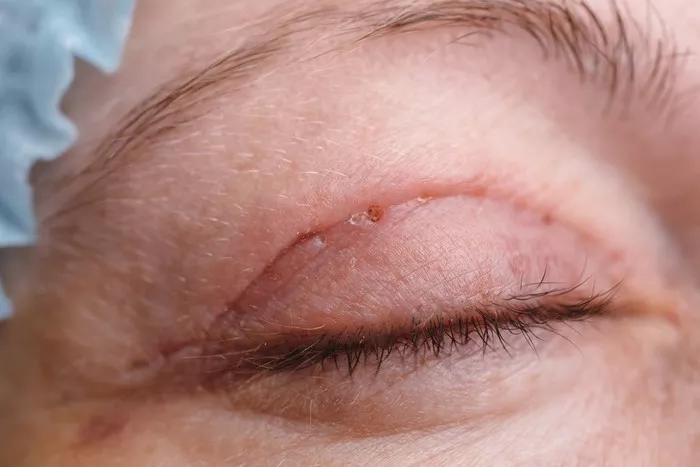Blepharoplasty, commonly known as eyelid surgery, is a cosmetic procedure designed to rejuvenate the appearance of the eyes by addressing issues such as sagging skin, excess fat, and wrinkles. As individuals embark on the transformative journey of blepharoplasty, a crucial aspect to consider is the healing process of the resulting scars. This comprehensive article aims to delve into the intricacies of blepharoplasty scars recovery, offering insights into the duration and stages of healing associated with this cosmetic intervention.
Understanding Blepharoplasty and Scarring
Defining Blepharoplasty
Blepharoplasty is a surgical procedure that involves the removal or repositioning of excess skin, muscle, and fat from the eyelids. The goal is to create a more youthful and rejuvenated appearance by addressing issues such as drooping upper eyelids, under-eye bags, and fine lines. While the surgical techniques aim to minimize scarring, the presence of scars is an inevitable aspect of any surgery.
Impact on Tissues and Scar Formation
The surgical intervention in blepharoplasty involves incisions made in strategic locations to access and modify eyelid tissues. The healing process includes the formation of scars as the body naturally responds to the incisions. Understanding how scars form and evolve is crucial for individuals undergoing blepharoplasty.
Immediate Postoperative Period
Incision Care
In the initial days following blepharoplasty, the focus is on meticulous incision care. Patients are provided with postoperative care instructions, including how to clean and care for the incision sites. This involves applying prescribed ointments, avoiding excessive moisture, and refraining from activities that may strain the healing tissues.
Swelling and Bruising
During this period, patients often experience swelling and bruising around the eyes. These side effects are natural responses to the surgical intervention and are closely monitored during follow-up appointments. The management of swelling and bruising contributes to the overall appearance of scars as they begin to form.
Stitches and Dressings
Follow-Up Appointments
Around the end of the first week, patients typically attend a follow-up appointment with their surgeon. During this visit, stitches may be removed, and any necessary adjustments to dressings or bandages are made. The surgeon evaluates the initial healing progress, providing insights into how the scars are developing.
Gradual Return to Normal Activities
As the second week unfolds, many patients find themselves more comfortable resuming light daily activities. While the initial healing period is crucial for scar formation, it is essential to follow the surgeon’s recommendations regarding the extent of physical activity allowed during this phase. Strenuous exercises should still be avoided to prevent strain on the healing tissues.
Subtle Changes and Continued Healing
Reduction in Swelling
Beyond the initial month, patients often notice a reduction in swelling and bruising. This marks a positive sign in the healing process, and the scars become more visible. While the initial results of blepharoplasty become apparent during this period, it is crucial to understand that the full outcome may take several weeks to fully manifest as residual swelling continues to diminish.
Scar Massage
Some surgeons recommend scar massage during this phase to promote optimal scar healing. Gentle massaging of the scars can help break down scar tissue, reduce stiffness, and enhance the overall appearance of the scars. Patients should only engage in scar massage under the guidance of their surgeon and after the initial healing phase.
Long-Term Healing
Scar Maturation
The long-term healing process extends over several months. By the end of the third month, patients often experience a significant reduction in swelling, and the scars continue to mature. Scar maturation is a gradual process, and the final appearance of the scars becomes increasingly evident during this phase.
Scar Care
While scars may appear less noticeable, it is crucial for patients to continue adhering to postoperative scar care guidelines. This may include avoiding sun exposure, using sunscreen, and maintaining overall skin health. These measures contribute to the longevity of the results and the ongoing improvement of scar appearance.
Individual Variations in Healing
Age, Genetics, and Lifestyle Impact
The duration and appearance of blepharoplasty scars can vary among individuals due to factors such as age, genetics, and lifestyle. Younger individuals often experience a faster recovery and better scar outcomes. Additionally, factors such as proper nutrition, hydration, and avoiding smoking can positively impact the healing process.
Scar Revision
In some cases, individuals may consider scar revision procedures to further refine the appearance of the scars. Scar revision involves surgical techniques to improve the texture, color, or overall visibility of scars. This option is typically explored after the initial healing phase.
Conclusion
In conclusion, the healing process of blepharoplasty scars is a dynamic journey that unfolds over several months. Understanding the various stages of scar formation and evolution, from the immediate postoperative period to the long-term maturation, is crucial for individuals considering or undergoing this cosmetic procedure. By actively participating in postoperative scar care, being aware of potential variations in healing, and maintaining realistic expectations, patients can embrace the evolution of blepharoplasty scars and enjoy the revitalized appearance achieved through eyelid surgery.


